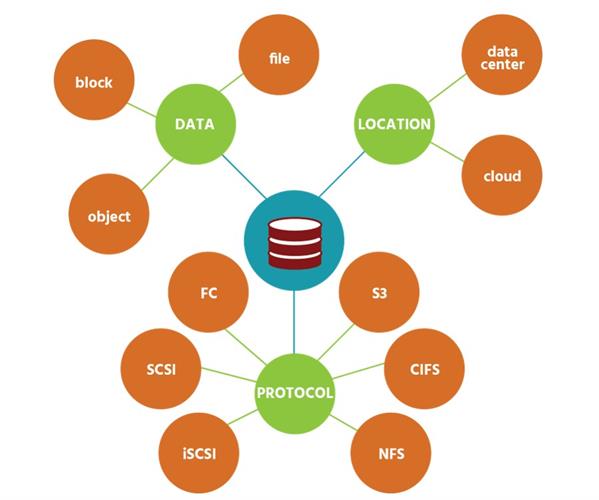What is Software-Defined Storage?
What is Software-Defined Storage?

In one sense, it’s easy enough to know what software-defined storage (SDS) is because the storage industry itself provides us with a definition. The Storage Networking Industry Association (www.snia.org), the global trade association, describes SDS as “Virtualized storage with a service management interface”. (An “interface” is a boundary through which separate systems interact with one another.) It is important to note that the terms storage virtualization and software-defined storage are not the same and that storage virtualization is only a piece of the whole SDS stack. SNIA goes on to say that SDS “must include:
- “Automation – Simplified management that reduces the cost of maintaining the storage infrastructure.”
- “Standard Interfaces – APIs for the management, provisioning, and maintenance of storage devices and services.” (An API is a set of tools that allows one set of software components to interact with another – we will be discussing these later in the course.)
- “Virtualized Data Path – Block, File, and/or Object interfaces that support applications written to these interfaces.” (A data path is a route taken by blocks, files, and objects to and from storage devices.)
- “Scalability – Seamless ability to scale (the storage infrastructure without disruption to the specified availability or performance.” (To scale is to increase/decrease the size of your storage.)
- “Transparency – The ability for storage consumers to monitor and manage their own storage consumption against available resources and costs.”
But to more fully understand the purpose of SDS, it’s necessary to understand at least some of the limitations of the storage technologies that existed before it. Limitations such as the inflexibility and high cost of proprietary hardware – hardware manufactured by one vendor that cannot be used with hardware manufactured by another vendor. An organization using such hardware that needs a new feature may need to have the feature custom-made – at more expense. And increasing the capacity of proprietary hardware by adding more disks is, of course, costly. Another limitation is how complicated storage technologies have been. RAID levels, striping, mirroring. Continuous data protection, asynchronous replication, data deduplication. LUNs, volumes, datastores. Storage administrators have had to know all this (and much, much more) while keeping up-to-date with the latest developments in the field.
Against this backdrop, it’s easy to see the advantages of software-defined storage. SDS separates storage software from the hardware it’s managing. Storage is no longer locked into proprietary hardware because SDS works with “commodity” hardware – that’s an industry-standard or X86 system. Organizations can, therefore, buy lower-cost hardware that genuinely works for them. If they want to upgrade the software independently of the hardware, they can. SDS helps manage all the different types of storage devices, by adding a software layer that controls all of the input and output operations from the different storage devices.
VMware’s SDS technologies are simple – yet intelligent. Whereas in traditional storage, applications request data from storage devices, now SDS responds to those requests, locating the data and retrieving it. And while administrators are busy doing other things, SDS can monitor how often data is being accessed and move it to optimal storage media.
Because SDS technologies work at the VM level, storage services can be tailored to precise requirements and adjusted as needed for each individual application – without affecting neighboring applications. Administrators are in complete control of what storage services (and therefore costs) are consumed by each application. They can precisely match application demand and supply at the exact time the resources are needed. Storage services become fluid – a little more for this application now, a little less for that one later.
With the rise of the virtualized data center, software-defined storage brings storage technology into the modern era.




